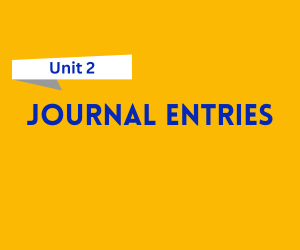Looking to understand practical accounting records beyond the journal and ledger? In Unit 2 of Financial Accounting, you’ll explore Subsidiary Books and Bank Reconciliation Statement (BRS) – tools that every accountant and business relies on for efficient bookkeeping.
Get ready to download student-friendly PDF notes, perfect for BBA 1st Semester revision and exam preparation.

Download Unit 2 – Subsidiary Books & Bank Reconciliation Statement Notes
Ready to study smarter? Click the link below to download Unit 2 PDF notes, prepared specifically for BBA 1st Semester students:
⬇️
Download Unit 2 Notes PDF
These notes are perfect for quick understanding, practice, and last-minute revision before your financial accounting exams.
What Are Subsidiary Books?
Subsidiary Books are specialized accounting books used for recording repetitive transactions in an organized manner. Instead of using the journal for every transaction, businesses maintain these books to save time and improve accuracy.
This unit explains the most commonly used subsidiary books:
1. Purchase Book
Used to record credit purchases of goods. It excludes cash purchases or asset purchases.
2. Sales Book
Used for credit sales of goods. Cash sales are not recorded here.
3. Purchase Returns Book
Also known as Returns Outward Book, it records goods returned to suppliers.
4. Sales Returns Book
Also known as Returns Inward Book, it tracks goods returned by customers.
5. Cash Book
One of the most important books, it records all cash and bank transactions.
You’ll learn about:
Single column cash book – only cash transactions
Double column cash book – cash + discount
Triple column cash book – cash + bank + discount
Journal Proper
This is a residual book for recording non-routine transactions like opening entries, adjustments, depreciation, and transfer entries that don’t fit in other subsidiary books.
Rectification of Errors
In real-life accounting, errors happen. This section teaches how to identify and correct errors to maintain accurate records.
You’ll learn:
Types of errors:
Errors of omission
Errors of commission
Errors of principle
Compensating errors
Rectification process at different stages (before and after trial balance)
Use of the Suspense Account when the trial balance does not match, to temporarily balance the books
This concept is crucial for error-free financial reporting.
Bank Reconciliation Statement (BRS)
Often, the bank balance shown in the cash book does not match the balance shown in the bank statement (passbook). That’s where BRS comes in.
Why is BRS Needed?
To identify timing differences in transactions
To detect errors or frauds
To ensure the accuracy of cash and bank balances
Procedure and Preparation of BRS
In this section, you’ll learn:
Steps to prepare a Bank Reconciliation Statement
How to adjust entries for:
Cheques issued but not presented
Cheques deposited but not cleared
Bank charges and interest entries
Errors in recording by either party
With the help of solved examples and practice problems, you’ll get comfortable preparing BRS for exam questions and real-life scenarios.
Final Thoughts
Unit 2 gives you hands-on accounting tools like subsidiary books, rectification of errors, and bank reconciliation, which are essential for every accounting system. Mastering these will improve your accuracy and efficiency in accounting.
Don’t forget to bookmark this page and share the notes with your classmates!
